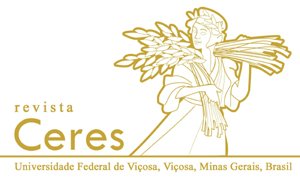ABSTRACT
The cultivation of Cotton (Gossypium hirsutum) is trending in an upward expansion at Minas Gerais state, Brazil. Due this growth, the breeding program has been demanded for the knowledge about the genetic diversity and correlation between morpho-agronomic traits, to start interesting crosses. The objective of this work was to study the genetic diversity and the correlation network between morpho-agronomic traits of cotton genotypes. Two cotton accessions and five commercial cultivars: FM993, FMT701, FM910, DP604 and DP604BG were evaluated for 16 traits. The results revealed divergence between the genotypes. Unweighted pair-group method arithmetic average (UPGMA) analysis allocated the genotypes in three clusters, with DP604 and Accession 2 being the most divergent. The correlation network helped to visualize the association between traits, presenting a negative correlation between anthracnose with plant height (-0.465), plant vigor (-0.486) and main root length (-0.437). Also, even with some genotypes presenting a higher number of reproductive branches, the correlation for this trait with number of bolls showed a high significant value (0.68). Thus, the genotypes showed wide genetic diversity for the composition of future crosses in cotton breeding programs. The correlation network allowed the visualization of a medium to high correlation pattern for the morpho-agronomic traits.
Keywords
Gossypium hirsutum L.; mahalanobis generalized distance; morphoagronomic traits; multivariate analysis; clustering method

 Thumbnail
Thumbnail
 Thumbnail
Thumbnail

